Finding a Stealth Replacement for the Intruder
The Grumman A-6 Intruder was a legendary long-range US Navy attack aircraft that could operate in all weather conditions, day or night. They served from 1963 through to the 1990’s with the US Navy and US Marine Corps and saw extensive combat in Vietnam during the 1960’s and early 1970’s, Lebanon and Libya in the 1980’s, then during the 1990’s over Iraq, Somalia and Bosnia. It was always going to be tough to replace such a capable aircraft and the Navy made an expensive gamble with a radical design the likes of which had never before flown from a carrier deck.
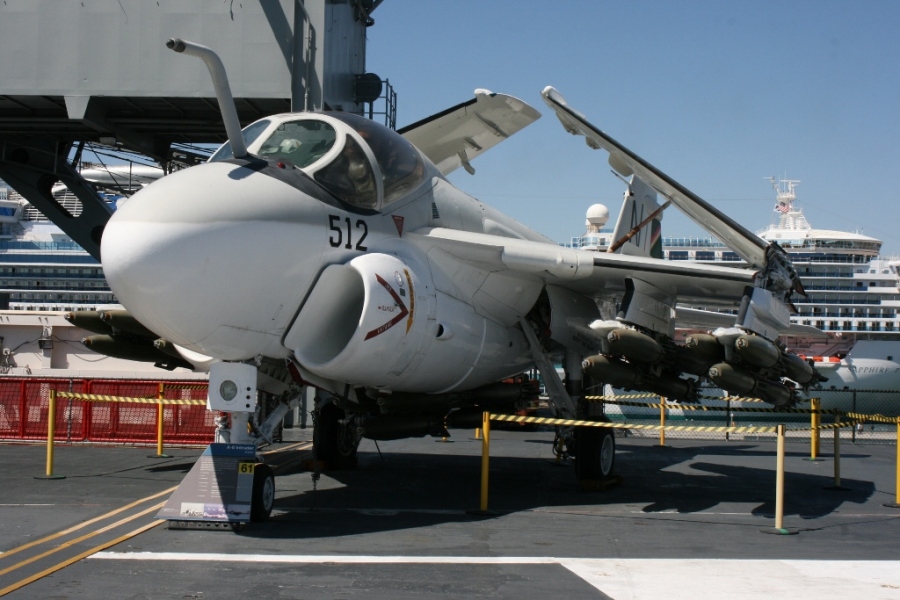
In 1983 the US Navy launched the Advanced Tactical Aircraft (ATA) program to replace the Grumman A-6 Intruder by 1994 and fly well into the 21st Century. Despite its success, the Intruder was vulnerable to anti-aircraft defences and many had been lost in combat, so for the ATA program the navy had decided to delve into the realms of stealth technology. A key requirement for the long range attack aircraft was to penetrate enemy air space undetected to deliver a heavy weapons payload deep behind enemy lines.
A consortium of some of the big guns of the United States aviation industry at the time, McDonnell Douglas/General Dynamics and Northrop/Grumman/Vought were awarded ATA design contracts in 1984 and again for updated design submissions in 1986. By 1988 only McDonnell Douglas/General Dynamics had submitted a viable design and were selected as the winning bid for the $4.8 billion USD program in January of that year.
The Avenger II
With plans to purchase 858 aircraft at for the US Navy and US Marine Corps, the subsonic McDonnell Douglas/General Dynamics A-12 Avenger II two-seat stealth attack aircraft crewed by a pilot and WSO/Navigator then became the planned heir apparent to the Intruder. Named as a homage to a World War Two era navy legend, the Grumman TBF Avenger torpedo bomber, the A-12 was a world apart in design and planned capability.

The futuristic triangular flying wing design of the A-12 incorporated stealth technology to minimise radar detection and featured various engine heat suppression methods to reduce their heat signature. Given it was a navy aircraft, the outer wing sections folded upwards to save space within an aircraft carrier hangar deck. It’s shape lead to the nickname of “Flying Dorito“.
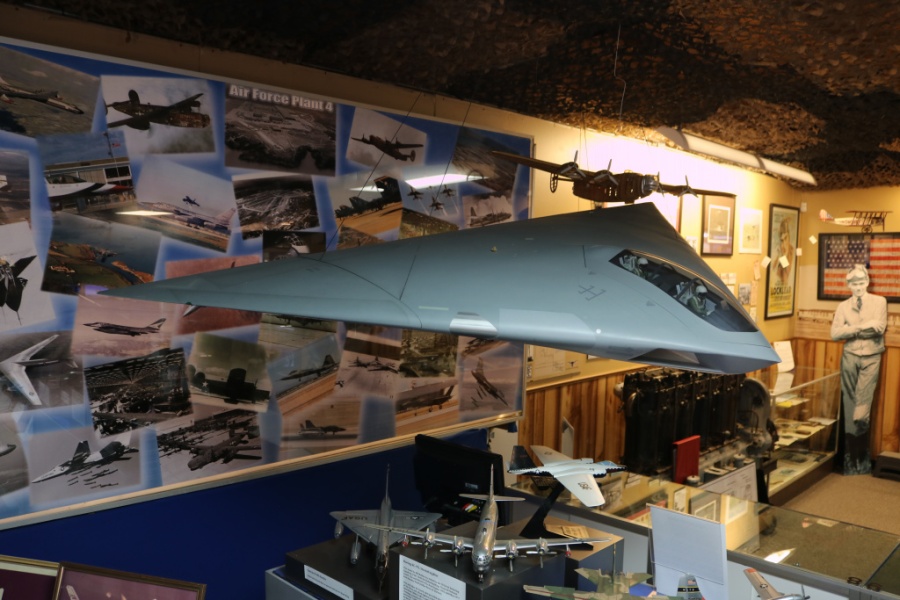


Advanced avionics and a Westinghouse AN/APQ-183 multimode radar, including an all glass display cockpit were to be incorporated into the design. The A-12 was to be powered by a pair of 13,000 lb thrust General Electric F412-GE-D5F2 non-afterburning turbofan engines with a maximum speed of 930 km/h (580 mph). The engine exhausts were designed to be concealed to reduce their heat signature.

To further maintain a stealth profile, the weapons payload would have been carried within four internal weapons bays. Planned armament included various bombs and smart weapons, along with a pair of AIM-120 AMRAAM medium range air to air missiles or AGM-88 HARM anti-radiation missiles.
Initially 8 A-12 were to be built to commence a full scale development, testing and evaluation program. The prototype was intended to make its first flight by December 1990. This proved to be an overly ambitious target date!
Trouble Sets In
By 1990 the A-12 program was in big trouble. To maintain strength, the composite materials planned for its construction were found to be heavier than expected. In fact it was 30% heavier than the original specification and a major problem for carrier deck operations! Technical hurdles in the development of its complex radar and avionics systems also began to lead to extreme cost and schedule overruns. The project simply involved too much unproven technology to ever come in under budget. Not surprisingly the proposed first flight was pushed back to early 1992.
With an estimated cost of $96 million USD per airframe, the planned purchase of 238 A-12’s for the Marines was cancelled in April 1990 and the overall order was reduced to 620 aircraft for the Navy only. Any plans for the US Air Force to possibly purchase an additional 400 aircraft must have rapidly slipped away during this period of uncertainty…
Ultimately the program lacked proper oversight from the start and by November 1990 the US government reported serious problems with the A-12 program and the Navy were asked to justify why it should continue. This was a complex aircraft and there was discussion that the program could potentially absorb 70% of US Navy aircraft operating costs in three years, yet in reality it looked like McDonnell Douglas/General Dynamics were going to struggle to even deliver a single aircraft!
Cancellation
By January 1991 the A-12 program was 18 months behind schedule and around $1.4 billion over budget with only test models and a mock-up airframe to show for it! The mock-up may have looked the real deal but then Secretary of Defence Dick Cheney really had no choice but to cancel the program on January 7th, 1991 (the most expensive military project ever cancelled by the DOD).

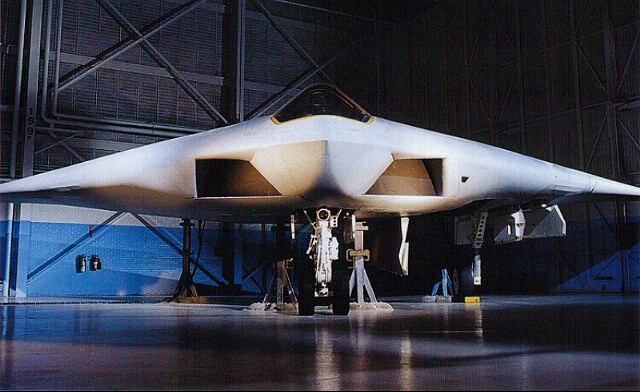
The program cancellation lead to over two decades of legal battles between the government and the aviation companies, with the DOD wanting back the $1.3 billion they had already invested for little in return! The aviation companies in return wanted to keep the money plus be paid an additional $1 billion to cover what they stated was a wrongfully terminated contract that had financially severely harmed the companies operations and the careers of its employee’s. It was not settled until January 2014, when Boeing (who had taken over McDonnell Douglas in a 1997 merger) and General Dynamics agreed to provide just $200 million each in aircraft and services to the DOD.
Although the Grumman A-6 Intruder was still a highly capable platform, by the early 1990’s with the Cold War winding down, the Department of Defence was looking to cut budget expenditure by reducing the types of aircraft operated off Navy carriers. As such Intruders were retired from service with the Marines in 1993 and from the Navy in 1997.
The Successors
With no McDonnell Douglas/General Dynamics A-12 Avenger II, the US Navy attack role was assumed by the Grumman F-14D Tomcat fitted with a LANTIRN targeting pod (aka “Bombcat“) and then the Boeing F/A-18E/F Super Hornet but both lacked the long range of the Intruder – a capability the navy has never replaced. The US Marine Corps soldiered on with the McDonnell Douglas F/A-18 Hornet.
Ultimately and belatedly, the Lockheed Martin F-35 Lightning II Joint Strike Fighter has become the true stealth based successor to the failed A-12 program, albeit still with a vastly reduced range and payload. Expensive and with many well publicised development delays, the F-35 program has had no less notoriety and has kept the armchair experts busy on the internet and in the media but it is certainly on its way to becoming the future of western combat aviation!
The Mock-Up
Given its secretive nature and probably partially due to the painful sting of failure, the full scale McDonnell Douglas/General Dynamics A-12 Avenger II mock-up airframe was not publicly revealed until June 1996. Amazingly despite being a wooden panelled construction, lined with foam over a metal frame, this mock-up that basically cost $1.3 billion still exists today!
It can be found in Texas on permanent loan from the City of Fort Worth in the Fort Worth Aviation Museum collection at Meacham Field Airport. It has to be the most expensive mock-up in history!


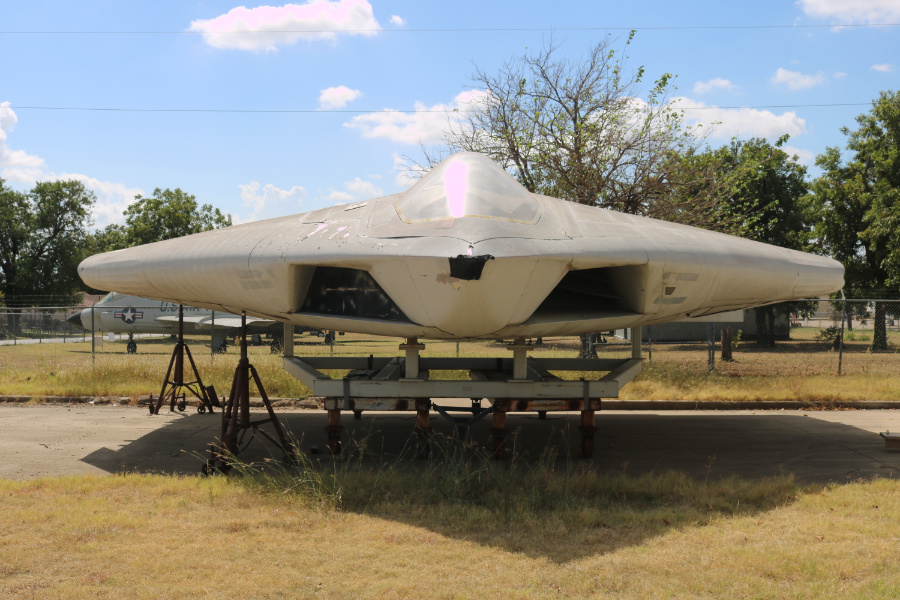


The nearby General Dynamics plant (now Lockheed Martin) was to be involved in A-12 production and the mock-up was stored there until relocated to the museum in 2014. Stored outdoors at the museum on its original factory stand with the outer wings removed and the wooden construction deteriorating, it is in desperate need of planned restoration. The undercarriage seen in photos from the 1990’s seems to have been removed and re-purposed long ago.


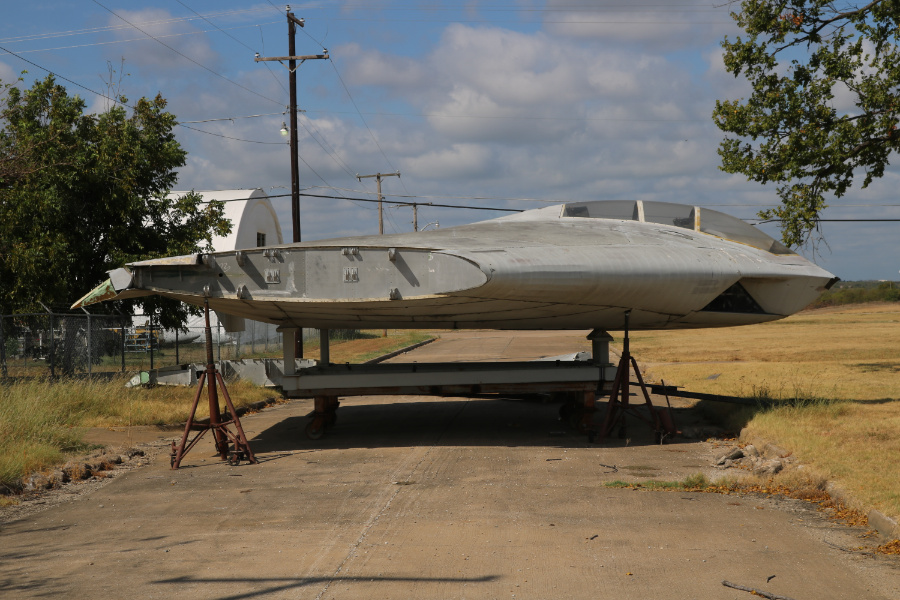
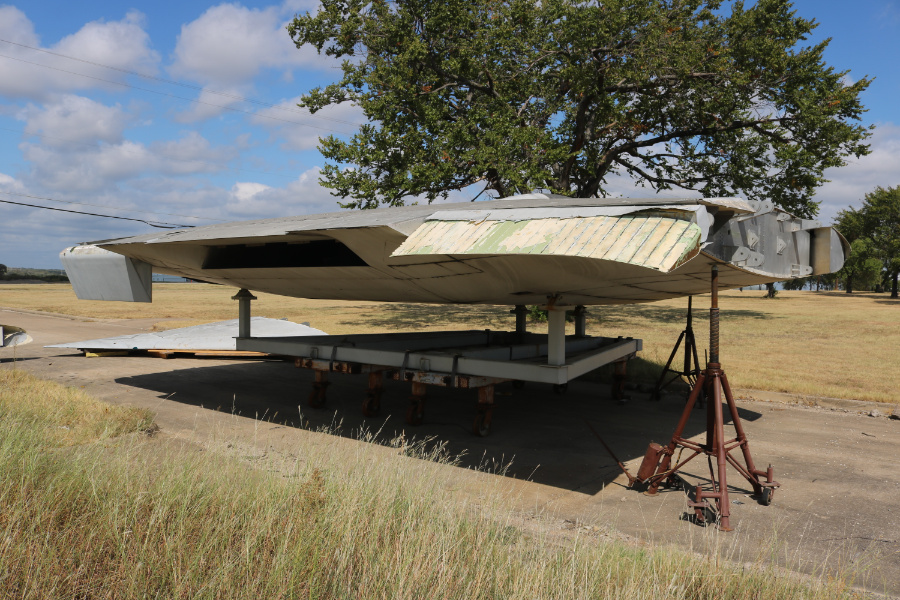




Standing there looking at the A-12, you can appreciate the large size of the design and the A-12 certainly has an out of this world look about it. Even though it is not a real aircraft, it is kind of sad to see the Avenger II mock-up in such a state but at least it wasn’t scrapped! Hopefully funds can be obtained to return this unique and controversial part of aviation history back to the way it looked in the 1990’s.
Note: The McDonnell Douglas/General Dynamics A-12 Avenger II mock-up airframe is not on display within the museum grounds and is actually on Meacham Field Airport land. I was fortunate to be escorted by an authorised person on to the airport to have a closer look at the Avenger II. Otherwise you can still see it from a couple of angles through the fence within the museum and from the nearby road that borders the airport.
References:
Federation of American Scientists – A-12 Avenger II
Global Security – A-12 Avenger II
New York Times – Navy Urges Aid to Aircraft Makers (January 3rd, 1991)
Reuters – Update 1-Boeing, General Dynamics reach $400 mln A-12 settlement with U.S. Navy
U.S. Naval Institute – Historic Aircraft – The Avenger That Couldn’t Avenge
Wikipedia – McDonnell Douglas/General Dynamics A-12 Avenger II

The Flying Dorito! Great report and nicely in-depth. It looks moden day though decades ago when envisioned–thanks!
LikeLiked by 1 person
Thanks. Yes it wouldnt be out of place today!
LikeLike
Fascinating! I am surprised that the mock up still survives.
LikeLiked by 1 person
it is amazing it wasn’t destroyed immediately after the program was cancelled!
LikeLiked by 1 person
Expensive indeed! If something isn’t done soon it will have to be scrapped and that would be a shame. Very interesting!
LikeLiked by 1 person
Yes very sad to see the state it is in but with no internal space or covered area to store it, the damage has been done
LikeLiked by 1 person
A very interesting blog post about an aircraft I knew very little about. Thanks very much for sharing it with us.
LikeLiked by 1 person
Great post and photos! Hopefully the A-12 mockup will be restored before it deteriorates further. I always lament the fact that this aircraft was cancelled, if only because it was such an innovative mix of technology for its day. I guess, given that it was being developed just as the Cold War came to an end, that even if it had gone into production its numbers would have been curtailed still further.
LikeLiked by 1 person
Thanks Matthew – possibly the right aircraft but at the very wrong time! Like the F-22, I am sure they would have had the knives out on the numbers if the cost had been somewhat controlled…
LikeLike
Well the Intruder was always going to leave big boots to fill…
Fascinating to see what might have been – and what could still be! Given advances in composites and fly-by-wire, I wouldn’t be surprised if the Avenger II was worth a second look. Maybe without on-board personnel this time around.
It would be nice to see the mock-up shown a little more love in the meantime.
LikeLike
Hi David,
I suspect many of the similar looking but smaller UAV/UCAV’s today benefit from this design.
LikeLike
How hard would it be to reassemble the mock up, if the parts are basically all in the one place?
Perhaps there’s some obscure military regulation that prohibits that?
LikeLiked by 1 person
That I cannot answer but it does seem unusual
LikeLiked by 1 person
Very interesting! Did you know the projected over-run was almost exactly equal to the difference in the GD/McAir proposal cost and that of Northrop/Vought/Grumman which bid a higher number and when asked by the Navy to come back with a Best and Final price, Northrop declined. The A-12 was another Fixed price contract and Northrop and their team bid exactly what they thought it would cost, not some pie in the sky number that GD/McAir bought into for the win! This era in defense procurement was a sad debacle for the DOD and the defense industry!
LikeLiked by 1 person
Quite an interesting time for mismanagement in those days! Northrop were wise to stick to larger bomber development.
LikeLike